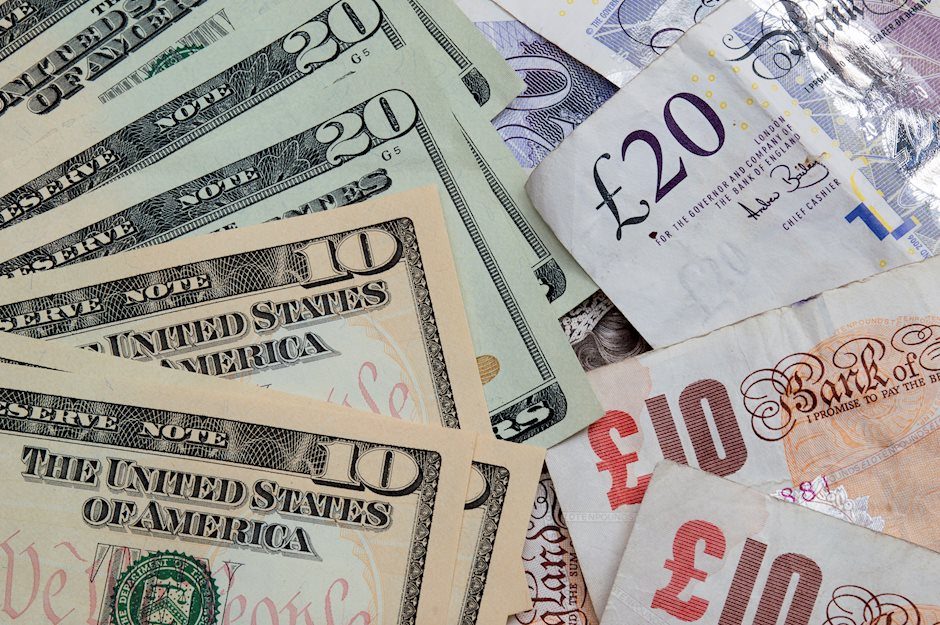GBP/USD defends 100-day SMA amid modest USD weakness, lacks bullish conviction
- GBP/USD attracts some dip-buying on Thursday, albeit struggles to build on the move up.
- Bets for bigger Fed rate cuts, sliding US bond yields undermine the USD and lend support.
- Dovish BoE expectations and social unrest in the UK keep a lid on any gains for the GBP.

The GBP/USD pair once again shows some resilience below the 100-day Simple Moving Average (SMA) and attracts dip-buyers in the vicinity of over a one-month low touched earlier this week. Spot prices, however, struggle to capitalize on the uptick and currently trade with only modest intraday gains, around the 1.2700 round-figure mark.
The US Dollar (USD) comes under some renewed selling pressure in the wake of rising bets for bigger interest rate cuts by the Federal Reserve (Fed), which triggers to a fresh leg down in the US Treasury bond yields. This, in turn, offers some support to the GBP/USD pair, though a softer risk tone helps limit losses for the safe-haven buck and acts as a headwind.
The market sentiment remains fragile on the back of growing concerns about an economic downturn in China and a possible US recession. Apart from this, geopolitical risks stemming from the ongoing conflicts in the Middle East temper investors' appetite for riskier assets, which, along with dovish Bank of England (BoE) expectations, caps the GBP/USD pair.
In fact, the BoE lowered interest rate for the first time in more than four years, from a 16-year high to 5.0% last Thursday. The markets are also pricing in the possibility of two additional interest rate cuts by the end of this year. Apart from this, the ongoing riots in the UK warrant caution for the British Pound (GBP) bulls and positioning for any upside for the GBP/USD pair.
There isn't any relevant market-moving economic data due for release from the UK on Thursday, while the US economic docket features the usual Initial Weekly Jobless Claims later during the early North American session. This, along with the US bond yields and the broader risk sentiment, will drive the USD demand and provide some impetus to the GBP/USD pair.
BoE FAQs
The Bank of England (BoE) decides monetary policy for the United Kingdom. Its primary goal is to achieve ‘price stability’, or a steady inflation rate of 2%. Its tool for achieving this is via the adjustment of base lending rates. The BoE sets the rate at which it lends to commercial banks and banks lend to each other, determining the level of interest rates in the economy overall. This also impacts the value of the Pound Sterling (GBP).
When inflation is above the Bank of England’s target it responds by raising interest rates, making it more expensive for people and businesses to access credit. This is positive for the Pound Sterling because higher interest rates make the UK a more attractive place for global investors to park their money. When inflation falls below target, it is a sign economic growth is slowing, and the BoE will consider lowering interest rates to cheapen credit in the hope businesses will borrow to invest in growth-generating projects – a negative for the Pound Sterling.
In extreme situations, the Bank of England can enact a policy called Quantitative Easing (QE). QE is the process by which the BoE substantially increases the flow of credit in a stuck financial system. QE is a last resort policy when lowering interest rates will not achieve the necessary result. The process of QE involves the BoE printing money to buy assets – usually government or AAA-rated corporate bonds – from banks and other financial institutions. QE usually results in a weaker Pound Sterling.
Quantitative tightening (QT) is the reverse of QE, enacted when the economy is strengthening and inflation starts rising. Whilst in QE the Bank of England (BoE) purchases government and corporate bonds from financial institutions to encourage them to lend; in QT, the BoE stops buying more bonds, and stops reinvesting the principal maturing on the bonds it already holds. It is usually positive for the Pound Sterling.
Author

Haresh Menghani
FXStreet
Haresh Menghani is a detail-oriented professional with 10+ years of extensive experience in analysing the global financial markets.

















